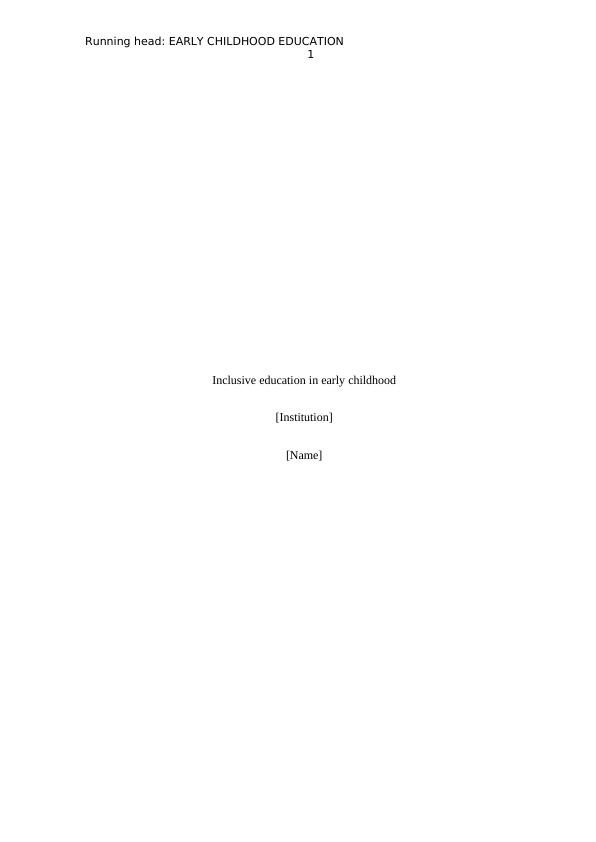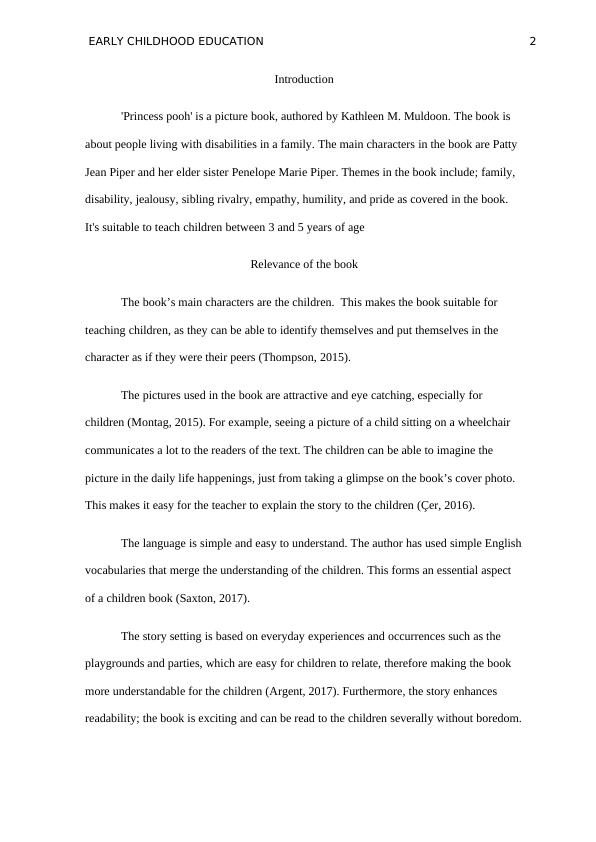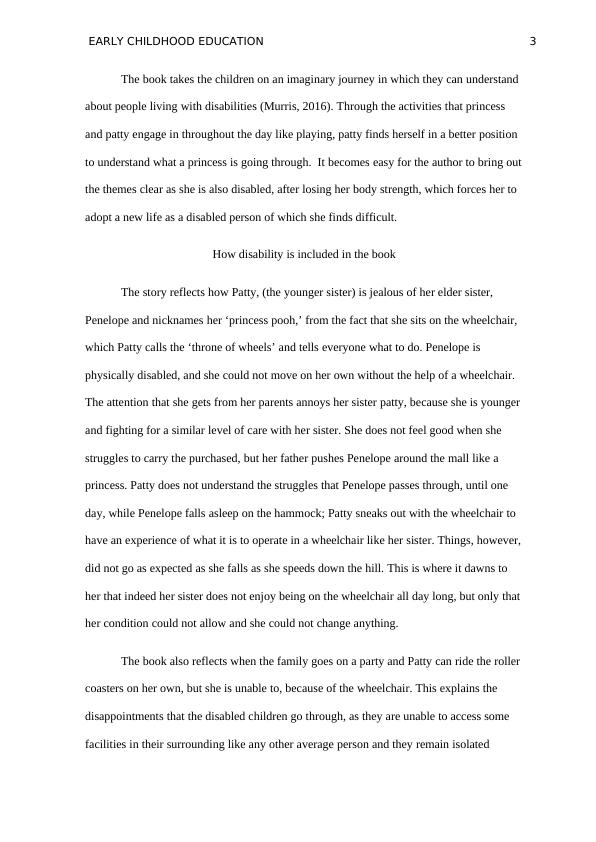Inclusive Education in Early Childhood
7 Pages1501 Words394 Views
Added on 2022-11-25
About This Document
This article discusses the relevance of the book 'Princess Pooh' in teaching children about disabilities and inclusive education in early childhood. It explores the themes, language, and message of the book, highlighting its suitability for children between 3 and 5 years of age. The article also examines how disability is included in the book and the impact it can have on creating awareness and empathy among children. Overall, 'Princess Pooh' serves as a valuable resource for teaching children about disabilities and promoting inclusive education in early childhood.
Inclusive Education in Early Childhood
Added on 2022-11-25
ShareRelated Documents
End of preview
Want to access all the pages? Upload your documents or become a member.
Overview of Leave Taking - Lesson Plan
|3
|785
|18
How My Sister Overcame Her Fear of Mathematics: A Story of Informal Learning
|7
|1937
|449
Enhancing Literacy and Language Development in Preschool Children
|9
|2550
|239



